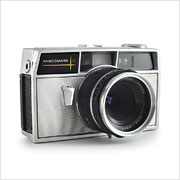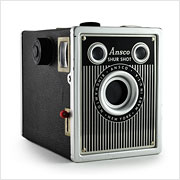Ansco Century of Progress
The Ansco Century of Progress is a commemorative version of the Ansco No. 2 Box camera made by Agfa-Ansco to be sold at the 1933 “Century of Progress” World’s Fair which took place in Chicago, USA. There were several branded cameras available at the 1933 World’s Fair including one based on the Kodak No. 2 Brownie as well as the cheap and cheerful “Yen Camera” from Japan.




















